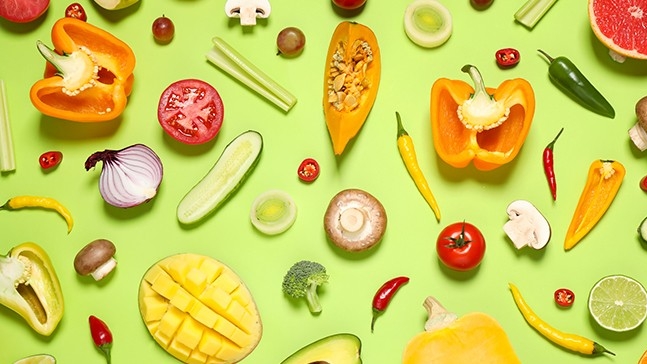- Diseases
- Acoustic Neuroma (14)
- Adrenal Gland Tumor (24)
- Anal Cancer (66)
- Anemia (2)
- Appendix Cancer (16)
- Bile Duct Cancer (28)
- Bladder Cancer (68)
- Brain Metastases (28)
- Brain Tumor (228)
- Breast Cancer (716)
- Breast Implant-Associated Anaplastic Large Cell Lymphoma (2)
- Cancer of Unknown Primary (4)
- Carcinoid Tumor (8)
- Cervical Cancer (154)
- Colon Cancer (164)
- Colorectal Cancer (110)
- Endocrine Tumor (4)
- Esophageal Cancer (42)
- Eye Cancer (36)
- Fallopian Tube Cancer (6)
- Germ Cell Tumor (4)
- Gestational Trophoblastic Disease (2)
- Head and Neck Cancer (6)
- Kidney Cancer (124)
- Leukemia (344)
- Liver Cancer (50)
- Lung Cancer (288)
- Lymphoma (284)
- Mesothelioma (14)
- Metastasis (30)
- Multiple Myeloma (98)
- Myelodysplastic Syndrome (60)
- Myeloproliferative Neoplasm (4)
- Neuroendocrine Tumors (16)
- Oral Cancer (100)
- Ovarian Cancer (170)
- Pancreatic Cancer (166)
- Parathyroid Disease (2)
- Penile Cancer (14)
- Pituitary Tumor (6)
- Prostate Cancer (144)
- Rectal Cancer (58)
- Renal Medullary Carcinoma (6)
- Salivary Gland Cancer (14)
- Sarcoma (236)
- Skin Cancer (294)
- Skull Base Tumors (56)
- Spinal Tumor (12)
- Stomach Cancer (60)
- Testicular Cancer (28)
- Throat Cancer (90)
- Thymoma (6)
- Thyroid Cancer (98)
- Tonsil Cancer (30)
- Uterine Cancer (78)
- Vaginal Cancer (14)
- Vulvar Cancer (18)
- Cancer Topic
- Adolescent and Young Adult Cancer Issues (20)
- Advance Care Planning (10)
- Biostatistics (2)
- Blood Donation (18)
- Bone Health (8)
- COVID-19 (362)
- Cancer Recurrence (120)
- Childhood Cancer Issues (120)
- Clinical Trials (622)
- Complementary Integrative Medicine (24)
- Cytogenetics (2)
- DNA Methylation (4)
- Diagnosis (226)
- Epigenetics (6)
- Fertility (62)
- Follow-up Guidelines (2)
- Health Disparities (14)
- Hereditary Cancer Syndromes (122)
- Immunology (18)
- Li-Fraumeni Syndrome (8)
- Mental Health (118)
- Molecular Diagnostics (8)
- Pain Management (64)
- Palliative Care (8)
- Pathology (10)
- Physical Therapy (18)
- Pregnancy (18)
- Prevention (888)
- Research (388)
- Second Opinion (74)
- Sexuality (16)
- Side Effects (602)
- Sleep Disorders (10)
- Stem Cell Transplantation Cellular Therapy (216)
- Support (404)
- Survivorship (322)
- Symptoms (186)
- Treatment (1770)
How to choose the best spring produce
3 minute read | Published March 21, 2022
Medically Reviewed | Last reviewed by an MD Anderson Cancer Center medical professional on March 21, 2022
The arrival of spring often inspires change, like spring cleaning. It can also be a great time to add more seasonal, healthy foods to your plate.
“All fruits and vegetables are healthy, but they’re fresher, tastier and more nutritious when they’re grown and harvested in their season, when they’re ripe,” says wellness dietitian Lindsey Wohlford. “The sooner we eat fruits and vegetables after they’re harvested, the more nutrients they have. Produce slowly loses nutrients starting from the moment it’s picked.”
Eating a variety of fruits and vegetables as part of a plant-based diet is a great way to increase fiber intake and support your immune system. It can also help reduce your cancer risk.
In the spring, seasonal produce includes vegetables like asparagus, greens, radishes, peas, artichokes, rhubarb and spinach. Spring fruits include apples, strawberries, pineapples, oranges, lemons and apricots. Many herbs and sprouts are also harvested in the spring.
Here’s what Wohlford shares about choosing the best spring produce.
1. Use your senses to help you pick
To tell whether a fruit or vegetable is fresh, Wohlford says, you can use three senses:
- Sight: A fresh fruit or vegetable should look healthy and vibrant. It shouldn’t have visible damage or bruising. It shouldn’t have wrinkled skin or look dehydrated, and greens shouldn’t have wilted leaves.
- Smell: Produce should smell fresh, not overripe or like mold or mildew. Fruit should smell like what it is. For example, a strawberry should have a pleasant berry-like scent
- Touch: Fresh produce should be firm, but not too hard. You can expect it to “give” a little when you lightly squeeze it. Avoid anything that is mushy, wet or slimy.
2. Choose a variety of colors
Spring fruits and vegetables come in almost every color of the rainbow, from bright orange apricots to vibrant green asparagus. Different colors and smells signal different phytonutrients, and it’s best to try to eat the rainbow of plant foods to get all the nutrients that the body needs.
“We want to maximize the amount of nutrients we get from fruits and vegetables. They’re nature’s best sources of antioxidants and phytonutrients, which are very important for cancer prevention,” says Wohlford. “Antioxidants can stimulate your immune system to fight disease, reduce inflammation and even slow cancer cell growth.”
3. Look for locally grown spring produce
Even if something is in season, it can lose nutrients if it travels a long way to your grocery store. Items grown far away and then shipped were picked before they were ripe, so they ripen while traveling – often from another state or country. Locally grown produce is allowed to grow and ripen before picking, and that means it has the most nutrients.
At the farmers market or grocery store, look for signs or labels that list where the food was grown. If it’s within 100 miles of your area, it’s local.
4. Try frozen produce
Frozen produce can be a great alternative to fresh produce, especially if you’re following a strict budget or tend to forget to eat fresh produce before it expires. Frozen fruits and vegetables are picked close to their peak ripeness, and flash freezing preserves their nutrients. When picking frozen produce at the store, stay away from vegetables packaged with any kind of sauce or fruits in syrup. Instead, you can add your own seasonings at home.
“Eating a combination of various locally grown fresh and frozen produce may be the most convenient and affordable option for many families,” says Wohlford.
5. Grow your own spring produce
Spring is the perfect time to try your hand at gardening. Many vegetables, like tomatoes, zucchini and peppers, are harvested in the summer, so they’re best planted in the spring, right after your area’s last freeze of the year.
“For new gardeners, an herb garden can be a wonderful way to get started, even if you only have a small space, like a porch, window box or patio” says Wohlford. “Fresh herbs are a flavorful and fun addition to home-cooked meals, and they’re a great source of antioxidants.”
Request an appointment of MD Anderson online or by calling 1-877-632-6789.

The sooner we eat something after it’s harvested, the more nutrients it has.
Lindsey Wohlford
Dietitian






